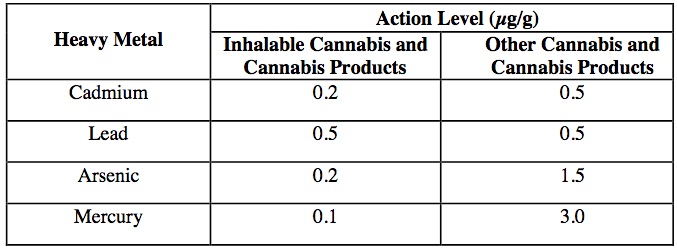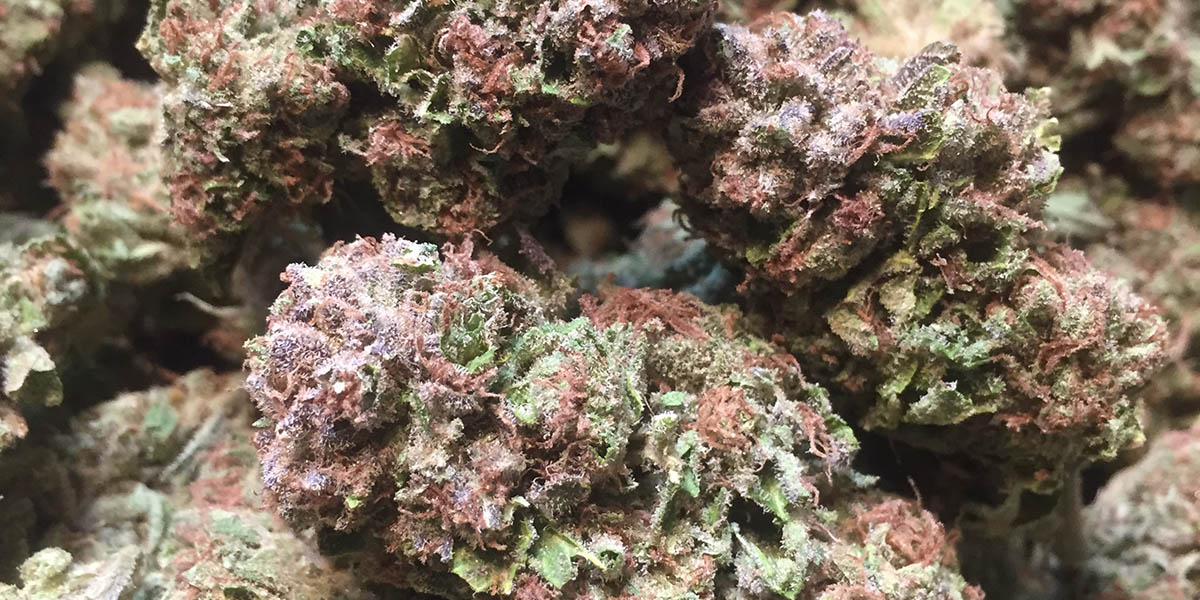With Phase III testing beginning December 31, 2018, the California Bureau of Cannabis Control will begin implementing the following additional tests on cannabis:
Terpenoids – If Labeled
Mycotoxins – Mandatory
Heavy Metals – Mandatory
Water Activity – Mandatory
Terpenoids
The State of California is requiring that if companies advertise specific terpenes or percentages of terpenes on their product label, they are required to have that product analyzed for terpene percentages for quality control.
§ 5725. Terpenoid Testing
- (a) The laboratory shall analyze a sample of cannabis or cannabis product to determine whether the terpenoid profile of the sample conforms to the labeled content of terpenoids.
- (b) The laboratory shall report the result of the terpenoid testing on the COA both as a percentage and in milligrams per gram (mg/g) and indicate “pass” or “fail” on the COA.
- (c) A sample shall be deemed to have passed the terpenoid testing if the concentration of terpenoids does not exceed the labeled content of total terpenoids, plus or minus 10 percent.
- (d) If a sample fails terpenoid testing, the batch from which the sample was collected fails terpenoid testing and shall not be released for retail.
Mycotoxins
Mycotoxins are toxic substances produced by certain fungi that can grow on human food and animal feed grain. Human exposure to mycotoxins, through ingestion, inhalation, and dermal contact, has been associated with severe human health impacts that include necrosis, cirrhosis, and carcinomas. The bureau proposes requiring testing for certain mycotoxins.
§ 5721. Mycotoxin Testing
- (a) The laboratory shall analyze a sample of cannabis or cannabis product to determine whether mycotoxins are present.
- (b) The laboratory shall report the result of the mycotoxins testing in unit micrograms per kilograms (μg/kg) on the COA and indicate “pass” or “fail” on the COA.
(c) A sample shall be deemed to have passed mycotoxin testing if both the following conditions are met:
(1) Total of aflatoxin B1, B2, G1, and G2 does not exceed 20 μg/kg of substance, and
(2) Ochratoxin A does not exceed 20 μg/kg of substance.
(d) If a sample fails mycotoxin testing, the batch from which the sample was collected fails mycotoxin testing and shall not be released for retail sale.
Heavy Metals
Cannabis plants are known to uptake metals from contaminated growth media (for example, soil), which increases the risk of adverse health effects associated with the consumption of medical cannabis goods. For example, exposure to lead may cause neurological, reproductive, developmental, immune, cardiovascular, and renal health effects. And mercury shows toxicological effects such as neurological, corrosive, hematopoietic, and renal effects as well as cutaneous disease (acrodynia).
§ 5723. Heavy Metals Testing
- (a) The laboratory shall analyze a sample of cannabis or cannabis product to determine whether heavy metals are present.
- (b) The laboratory shall report the result of the heavy metals test in micrograms per gram (μg/g) on the COA and indicate “pass” or “fail” on the COA.
- (c) A sample shall be deemed to have passed the heavy metals testing if the presence of heavy metals does not exceed the action levels listed in the following table.
- (d) If a sample fails heavy metals testing, the batch from which the sample was collected fails heavy metals testing and shall not be released for retail sale.

Water Activity
“Water activity” means a measurement of the quantity of water in a product that is available and therefore capable of supporting bacteria, yeasts, and mold.
§ 5717. Moisture Content and Water Activity Testing
(a) The laboratory shall analyze a sample of cannabis to determine the level of water activity and the percentage of moisture content.
(b) A cannabis sample shall be deemed to have passed water activity testing if the water activity does not exceed 0.65 Aw. The laboratory shall report the result of the water activity test on the certificate of analysis (COA) and indicate “pass” or “fail” on the COA.
(c) A cannabis sample shall be deemed to have passed moisture content testing if the moisture content does not exceed 13.0%.The laboratory shall report the result of the moisture content test in percentage on the COA and indicate “pass” or “fail” on the COA.
(d) The laboratory shall analyze edible cannabis products to determine the level of water activity. A solid or semi-solid edible cannabis product shall be deemed to have passed water activity testing if the water activity does not exceed 0.85 Aw. The laboratory shall report the result of the water activity test on the COAand indicate “pass” or “fail” on the COA.
(e) If a sample fails moisture content testing, the batch from which the sample was collected fails moisture content testing and shall not be released for retail sale.
(f) If a sample fails water activity testing, the batch from which the sample was collected fails water activity testing and shall not be released for retail sale.


